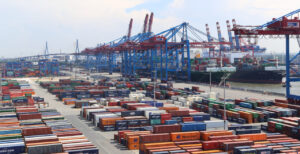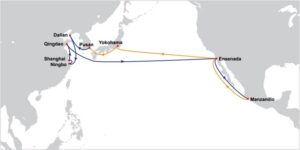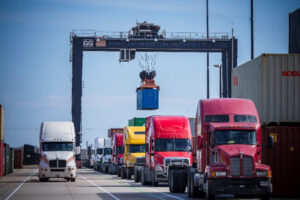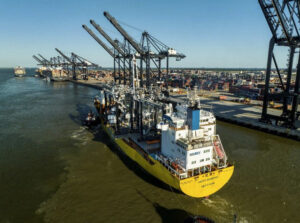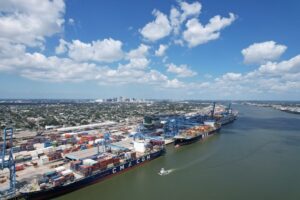First-half container throughput reached 4.5 million TEU, remaining 6.8% below the previous year’s total for the Port of Hamburg.
Bulk cargo handling increased by 19%, which led to grab cargoes powering growth. Coal imports produced strong growth of 46.3% at the port.
At 4.5 million TEU, container handling in the first six months of 2015 did not keep pace with the previous year’s strong performance. The 6.8% downturn was primarily attributable to weak foreign trade for the port’s two leading partners, China and Russia, for which container traffic totals via Hamburg were lower than in 2014, for China by 10.9% at 1.3 million TEU and for Russia by 35.9% at 212,000 TEU.
Since Hamburg handles around a 6% higher proportion of transhipment cargo than Antwerp or Rotterdam, the downturn in cargoes to/from China and Russia hit container handling at Germany’s largest universal port especially hard.
A large part of the cargo for/from China and Russia is transhipped via Hamburg, being transferred from large containerships on to feeder-ships, or vice versa. In the first half of 2015 China’s total foreign trade shrank by 6.9%.
On container traffic with Russia, in addition to the trade sanctions still in force, other factors such as the weak rouble, the fall in the oil price and economic recession have also caused the distinct downturn in container throughput evident in Hamburg.
Ingo Egloff, CEO of Port of Hamburg Marketing, said: “Goods from abroad are becoming costlier for Russian importers. Willingness to consume or to invest in Russia is noticeably dwindling. The IMF is assuming a 3.4% drop in Russian GDP this year. The fact that 32.1% fewer containers were handled in the first half of the year in Russia’s Baltic ports than in 2014 serves to underline this description of the current economic situation.”
For 2015, the Port of Hamburg’s marketing organisation predicts a further increase in bulk cargo-handling and a slight overall downturn in container throughput. By the end of 2015, seaborne cargo throughput of 9 million TEU is possible. For this, it is essential that seaborne foreign trade with core markets becomes stable.

